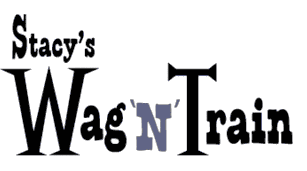Learning to read the subtle signs of body language
© Stacy Braslau-Schneck, CPDT
Six things to look for to check a dogs stress level or discomfort, or concern:

- Overall body: Stillness, especially changing from generally soft loosy-goosy movement; change in respiration rate (usually faster, shallower breaths).
- Mouth: Stress yawns (yawning when not tired); tongue flicks (“lizard tongue”) or lip-licking when food is not involved; Going from a relaxed open mouth to a concentrating closed mouth.
- Eyes: Hard or cold eyes, “he gets that look in his eyes”; contrast with soft, warm “puppy dog eyes”; whites of eyes showing; brows wrinkling.
- Ears: Ears pinned back, tight, or “pinched”.
- Tail: Change in the way the tail is carried – how high, low, or tucked the tail base is; change in rate of wagging.
- Gaze: Turning away from what is bothering him; a further signal is looking intently at what is bothering him; a red flag is looking intently at the face of the person bothering him. Keep in mind that all of these should be compared to your dog’s baseline or normal demeanor. A greyhound who normally carries his ears low on the head might look more stressed than a collie’s, but he can still pin them further when alarmed; a basset’s ears wont look the same pinned back while a German shepherd’s ears should be obvious.
These are signs of stress, distress, or discomfort. They are not “red flags” and they should not themselves be treated as a problem. They should be read as the dog saying “Im not comfortable with this” or “this concerns me” or “Im worried”. Take note of the immediate situation and the bigger picture if the dog is in an environment that he is known to be touchy about (near his food bowl, or the bed, or the front door); or if you are seeing a lot these signs of stress and take the opportunity to change something to avoid pushing your dog further.
Remember, dogs don’t lie about their feelings, but sometimes they convey them so subtly that we dont recognize what theyre trying to say until they’re pushed to the point of growling, snapping, or even biting.
See the Body Language pages for more information.
Last updated March 2022 by Stacy Braslau-Schneck. All material copyright Stacy Braslau-Schneck. Reprints for non-commercial use, and with the author’s permission only.
Would you, your training company, or your club like to reprint this? Please be sure to keep my name, business name, and the website URL with the article, and if possible, please send me a copy.
See the Contact page for email and mailing address.

